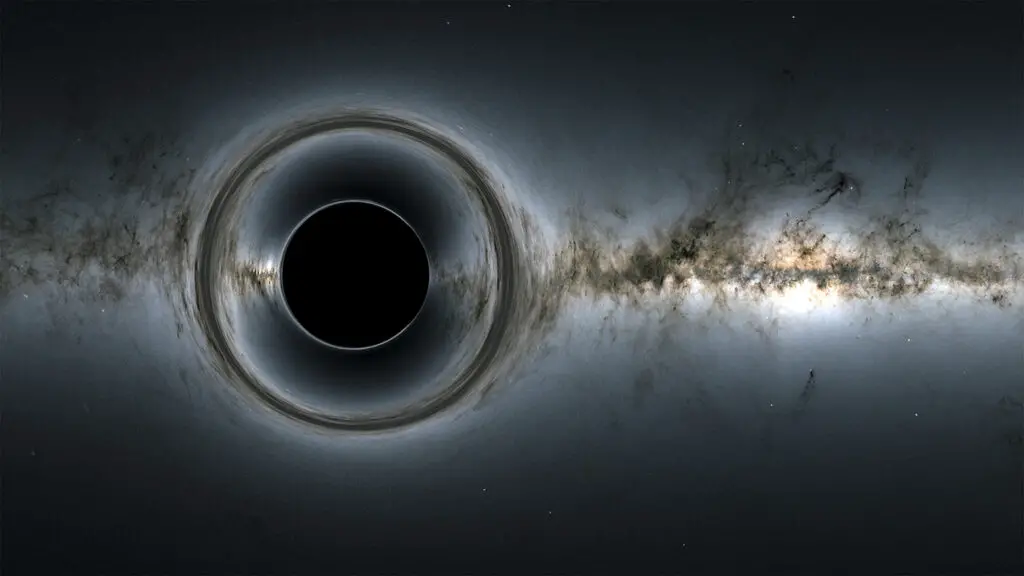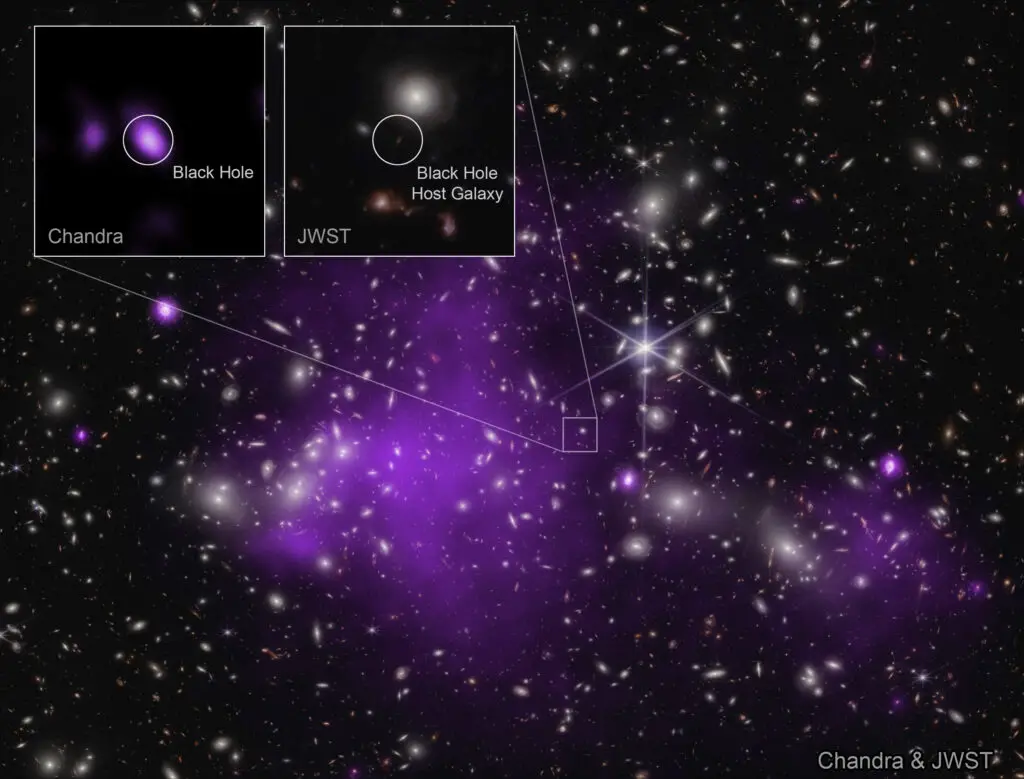Astronomers have witnessed a record-breaking black hole in the early universe, providing vital clues about the formation of these enigmatic cosmic objects.

This discovery, made possible by the combined efforts of NASA’s James Webb Space Telescope (JWST) and the Chandra X-ray Observatory, focuses on a galaxy named UHZ1, formed just 470 million years after the Big Bang.
The black hole at the center of UHZ1 is a true cosmic giant, with a mass equivalent to its host galaxy, approximately 140 million times the mass of the sun. This finding is significant as it challenges existing theories about the formation and growth of supermassive black holes.
The JWST first identified the faint light of UHZ1 through gravitational lensing, where the gravity of a massive foreground galaxy cluster amplified the light of UHZ1. Chandra’s subsequent observations revealed powerful X-rays emanating from a disk of gas around the black hole.

The mass of this black hole, estimated to be between tens of millions to hundreds of millions of solar masses, suggests it was born large, contradicting the theory that supermassive black holes grow gradually from smaller ones. This supports the hypothesis that some black holes form directly from collapsing massive gas clouds.
This discovery is pivotal in understanding the early universe’s dynamics. In most modern galaxies, supermassive black holes constitute only a fraction of their host galaxy’s mass. Observing a black hole in this early stage of growth could illuminate the correlation between a black hole’s mass and its galaxy’s development.
The UHZ1 black hole’s unique characteristics offer a rare glimpse into a brief phase where a supermassive black hole’s mass is comparable to the stars in its galaxy. This observation opens new avenues for research into the origins and evolution of supermassive black holes, enhancing our comprehension of the universe’s formative years.
Reference(s):

